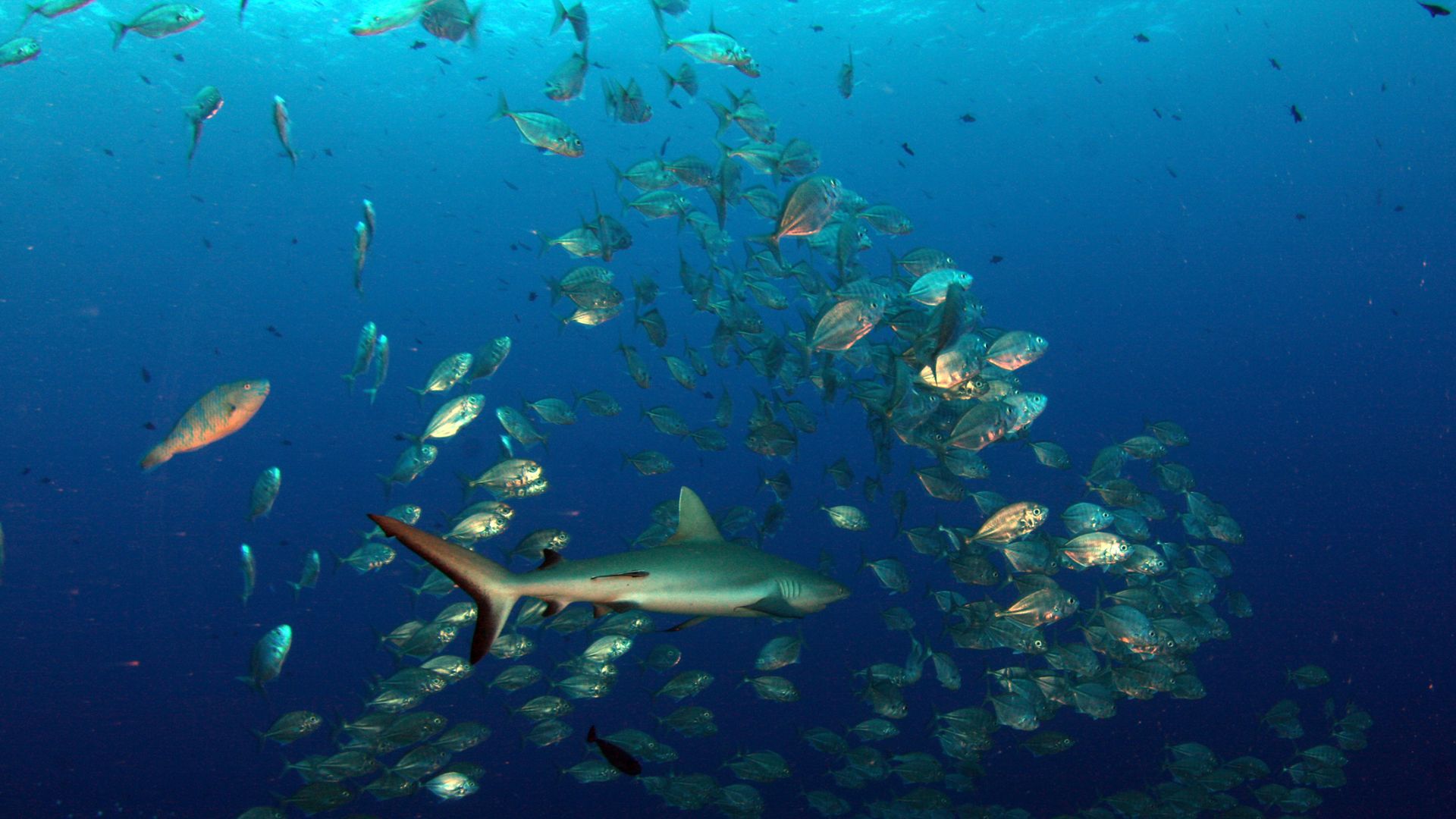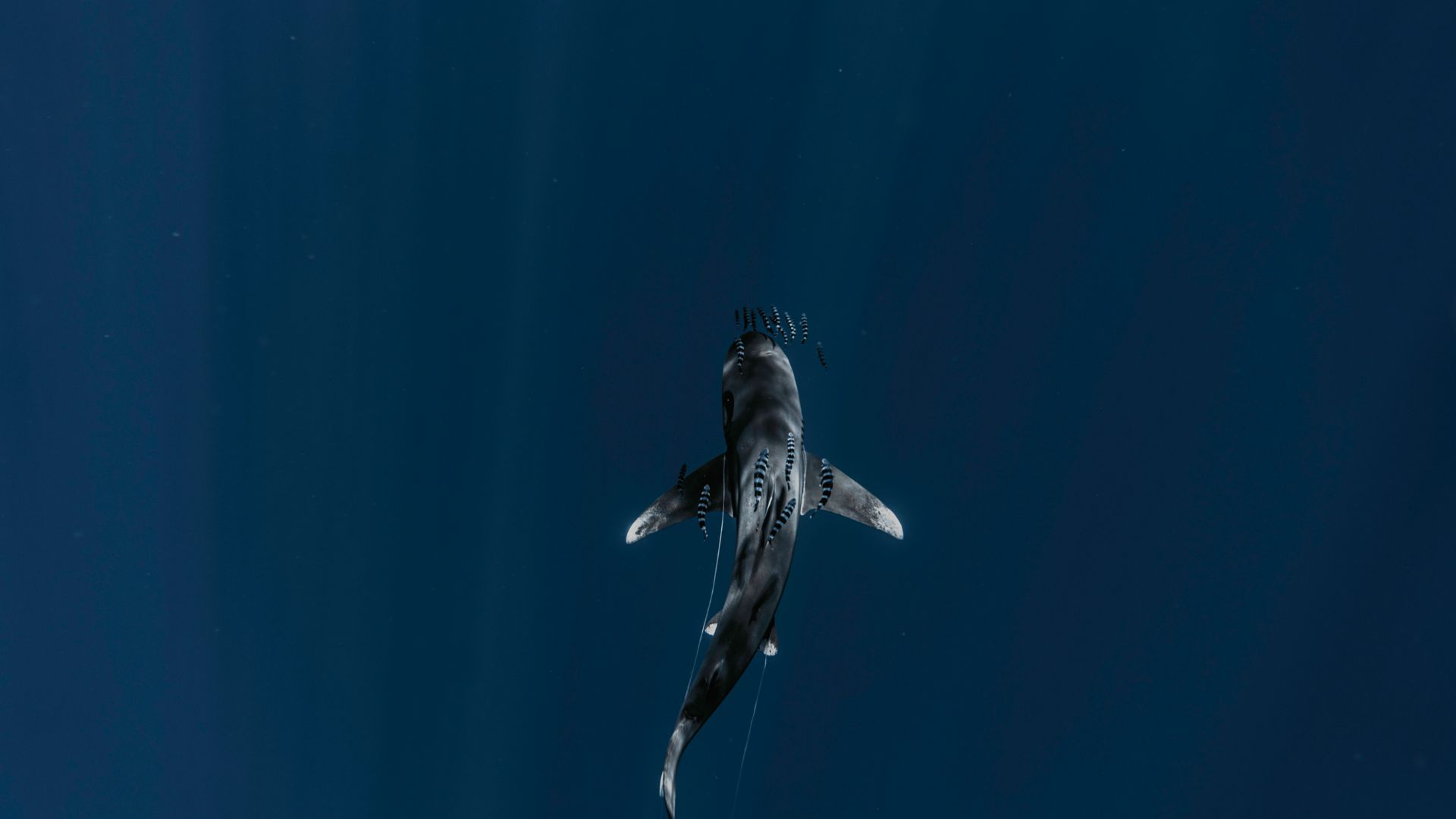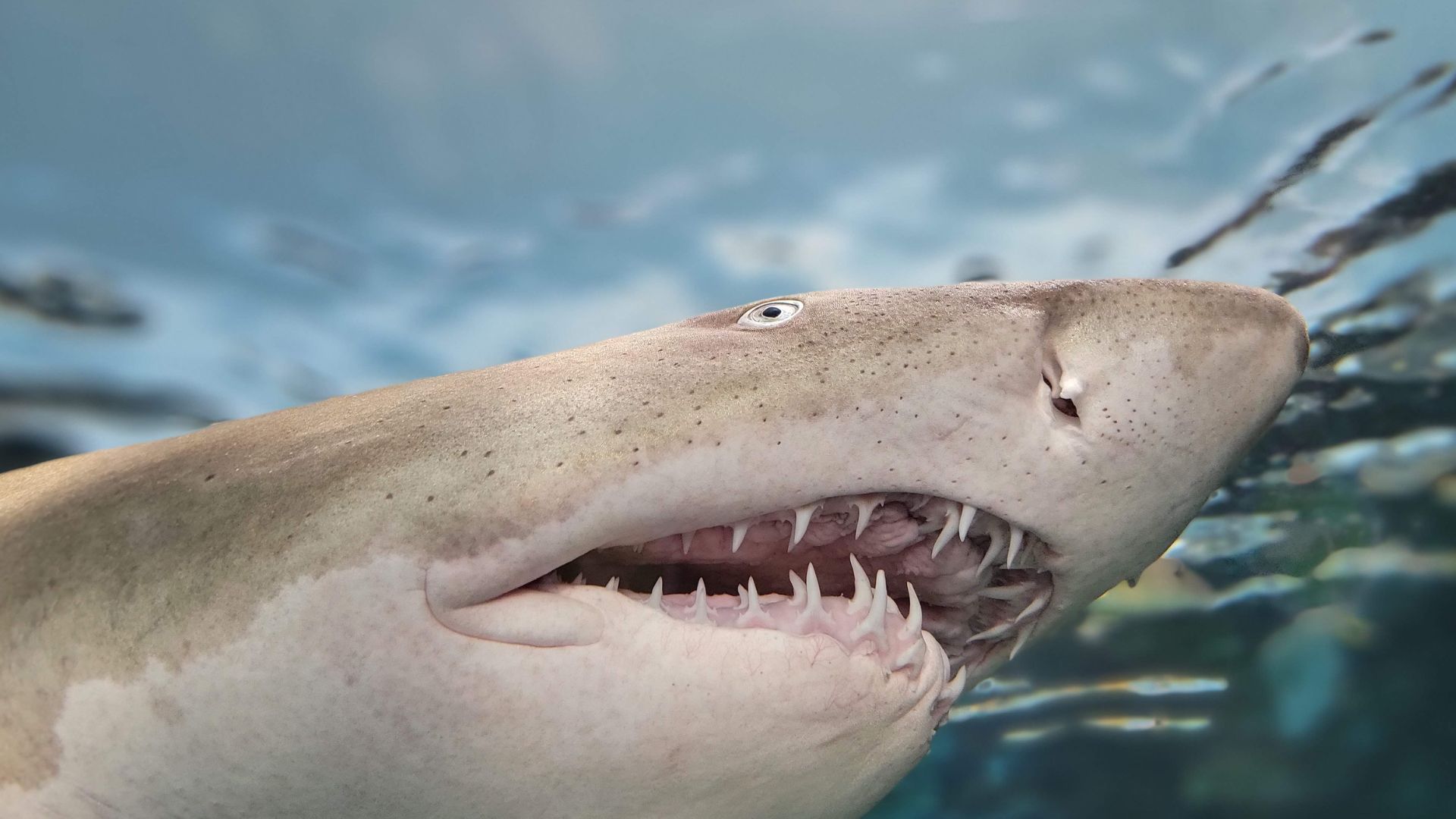
The most incredible shark migration patterns
Sharks are among the most fascinating creatures in the ocean, and one of their most incredible behaviours is their ability to migrate vast distances across the globe. These migrations, which can span thousands of miles, are not just about moving from one feeding ground to another—they are essential for the survival of many shark species. Shark migrations are often seasonal, driven by the need to find food, reproduce, or navigate changing oceanic conditions.
In this article, we’ll take a deep dive into some of the most remarkable shark migration patterns, including the Great White Shark, Hammerhead Shark, and Whale Shark, and explore the ecological significance of these incredible journeys:
- The Great White Shark migration
- The Hammerhead shark migration
- Other remarkable shark migrations
- A marvel of nature: Shark migrations
The Great White Shark migration
The Great White Shark (Carcharodon carcharias) is perhaps the most famous shark species, largely due to its fearsome reputation and its portrayal in movies like Jaws. However, beyond the myth of the bloodthirsty predator lies a fascinating migratory pattern that has captured the attention of scientists and ocean enthusiasts alike.
Great White Sharks are known for their long-distance seasonal migrations, often travelling between feeding grounds and breeding sites. These sharks have been known to migrate up to 20,000 miles in a single year. In some regions, Great Whites migrate between temperate coastal waters, where they feed on seals, and deeper, colder waters to breed. One of the most well-documented migration routes is between the coasts of South Africa and Australia, two locations that provide the sharks with rich hunting grounds.
“Shark migrations are not just journeys; they are the lifelines of the ocean, ensuring the balance and health of marine ecosystems around the world.”
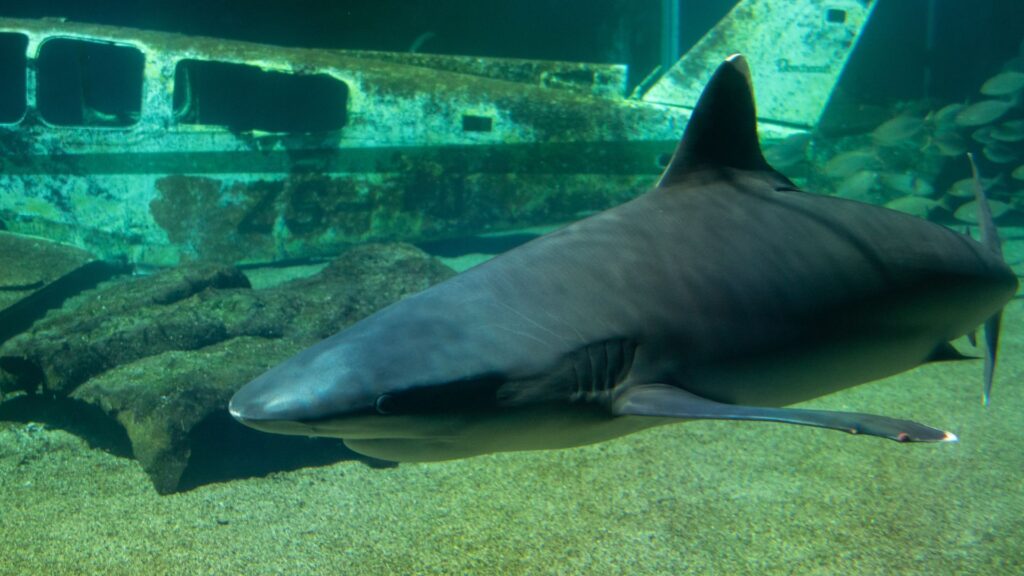
The reasons behind this migration are primarily linked to their hunting habits and reproduction. Great Whites are known to be opportunistic feeders, hunting seals and other marine mammals along coastlines. However, to find mates and give birth, they must travel to different waters. Female Great Whites, in particular, are believed to travel further than males in search of suitable breeding grounds, while males tend to stay closer to the coastlines where food is more abundant.
Technology has played a crucial role in understanding these migrations. By using satellite tags, researchers can track the movements of Great White Sharks in real time, gaining insights into their migratory patterns and behaviours. These studies have revealed just how complex and far-reaching the journeys of Great Whites can be, further highlighting the importance of protecting these predators across vast areas of the ocean.
The Hammerhead shark migration
The Hammerhead Shark (Sphyrna) is another species known for its fascinating migratory patterns. Hammerheads are distinctive due to their unusual, wide-set heads, which they use to enhance their sensory perception, allowing them to detect prey more effectively. These sharks are found in tropical and subtropical waters around the world, but their migratory habits are particularly interesting.
Unlike Great White Sharks, which often migrate alone, Hammerhead Sharks tend to migrate in groups, known as “schools.” These schools can consist of hundreds of sharks, and they travel together during seasonal migrations to take advantage of abundant food sources. Hammerhead migrations are typically driven by the availability of food, such as schooling fish or rays, which form a large part of their diet. They also follow seasonal patterns that bring them to specific feeding areas, where they can take advantage of ocean currents to hunt more efficiently.
Interestingly, the group behaviour of Hammerheads during migration is thought to be linked to socialisation, with these sharks forming strong bonds with one another. This behaviour is different from that of many other shark species, which tend to be more solitary. The migratory patterns of Hammerheads also seem to be influenced by environmental factors such as water temperature and breeding cycles. Female Hammerheads tend to travel further than males, potentially to find suitable breeding grounds or give birth to pups.
The group migrations of Hammerhead Sharks are not only remarkable due to their social nature but also because of their role in regulating the populations of smaller marine species. As apex predators, Hammerheads help maintain a healthy balance in their ecosystems by controlling the populations of prey species, preventing overgrazing of marine resources.
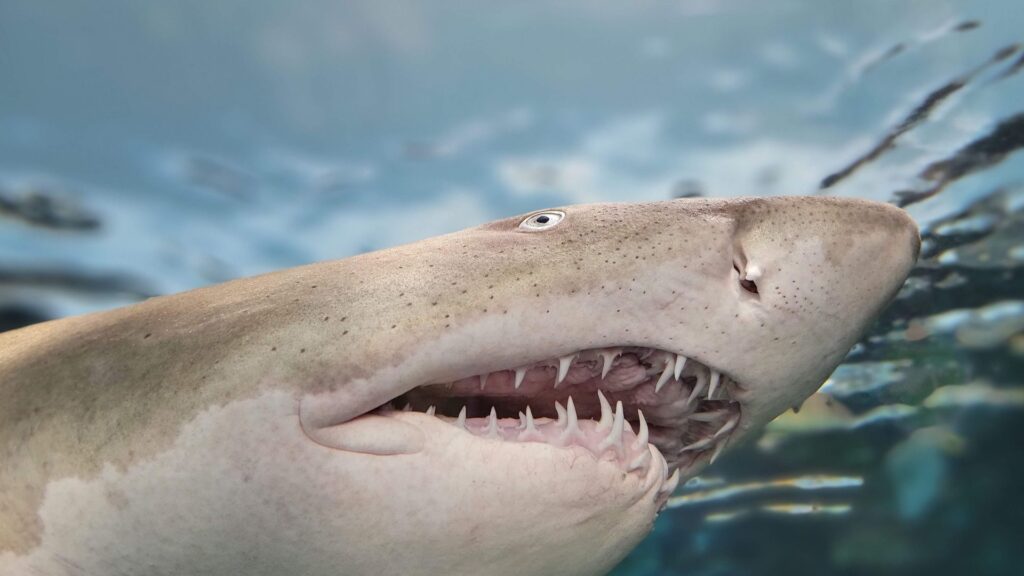
Other remarkable shark migrations
While the Great White and Hammerhead Sharks are among the most well-known migratory sharks, there are other species that also undertake remarkable journeys across the globe. One of the most impressive migrators in the shark world is the Whale Shark (Rhincodon typus), the largest fish in the world. Despite their size, Whale Sharks are gentle giants, feeding primarily on plankton and small fish.
Whale Sharks are known to travel vast distances between tropical and temperate waters, following seasonal blooms of plankton. Their migratory patterns are influenced by the availability of food, which is concentrated in specific areas during certain times of the year. Whale Sharks are also known to travel along coastlines, sometimes following the migration patterns of smaller fish and squid. These journeys can span thousands of miles, making Whale Sharks one of the most migratory species in the ocean.
The ecological significance of these migrations cannot be overstated. As filter feeders, Whale Sharks help regulate plankton populations, which are vital to the health of marine ecosystems. Their presence in different regions also helps to maintain the balance of the food web, as their migrations support the movement of smaller marine species across large distances.
A marvel of nature: Shark migrations
Shark migrations are a marvel of nature, showcasing the incredible adaptability and resilience of these apex predators. From the long-distance travels of the Great White Shark to the group migrations of the Hammerhead Shark and the vast ocean journeys of the Whale Shark, these migrations play a crucial role in maintaining the health of marine ecosystems. Sharks are not only essential for regulating prey populations but also for ensuring the balance of food webs, helping to sustain biodiversity in the ocean.
Let’s summarize before you go:
- Sharks, including Great Whites, Hammerheads, and Whale Sharks, undertake incredible long-distance migrations driven by food availability, reproduction, and environmental factors.
- Great White Sharks migrate over vast distances (up to 20,000 miles) to find food and breeding grounds, with females traveling further than males.
- Hammerhead Sharks migrate in large groups, known as schools, influenced by the availability of food and environmental conditions, with females often travelling further for breeding.
- The world’s largest fish, Whale Sharks, migrate across tropical and temperate waters, following plankton blooms and playing a crucial role in regulating marine food webs.
- Shark migrations are vital for marine ecosystems, helping to regulate prey populations, maintain biodiversity, and sustain healthy food webs across the oceans.
The challenges of studying these migrations are significant, as sharks travel across vast areas of the ocean, often beyond the reach of conventional research methods. However, advances in technology, such as satellite tracking and tagging, have provided valuable insights into their migratory behaviours, helping us to better understand their needs and the threats they face. Protecting the migratory routes of sharks is essential for their conservation and for the preservation of the ecosystems they help sustain. The next time you hear about a shark migrating across the ocean, remember: these remarkable creatures are not just travelling; they are playing a vital role in the health and future of our oceans.

